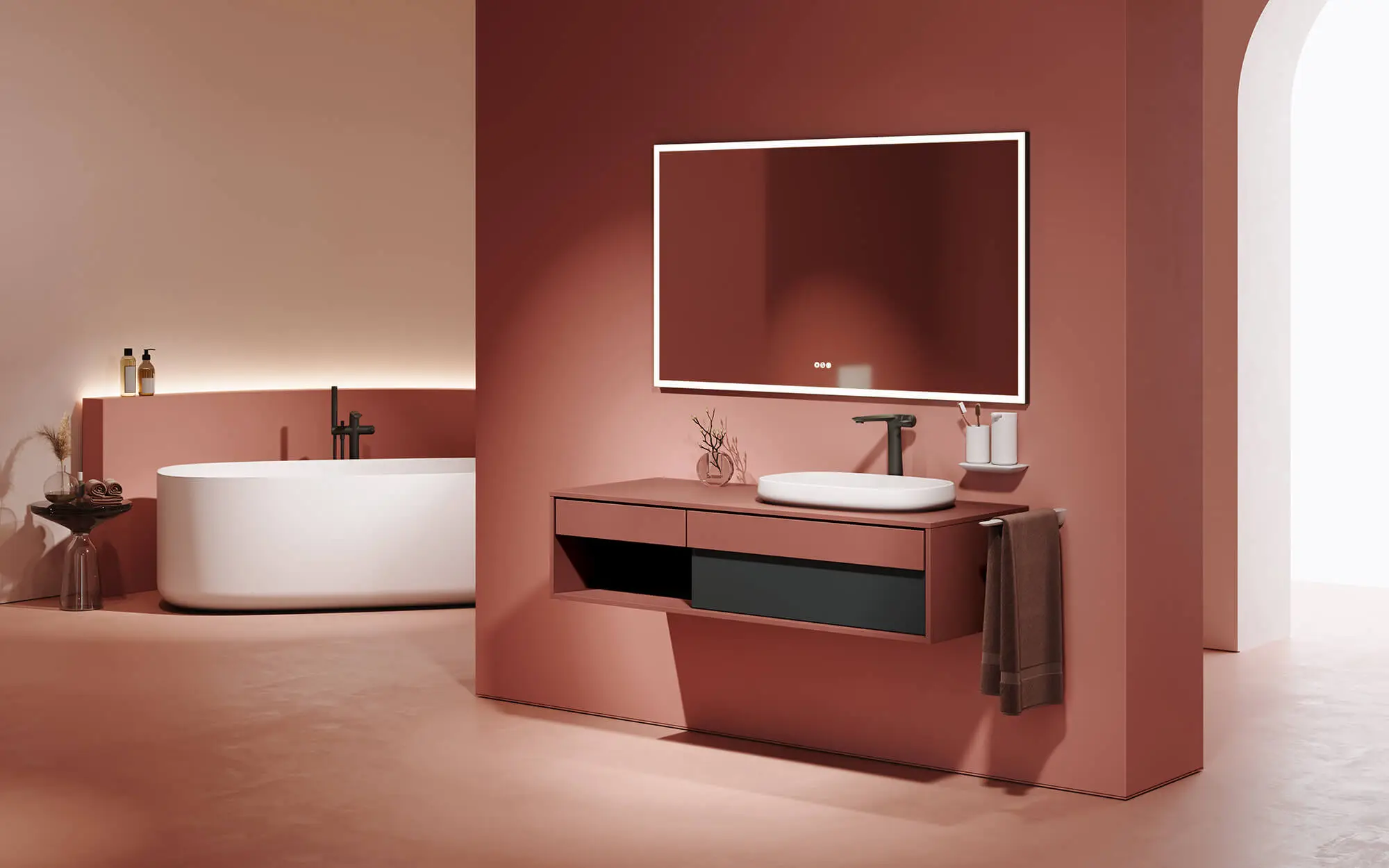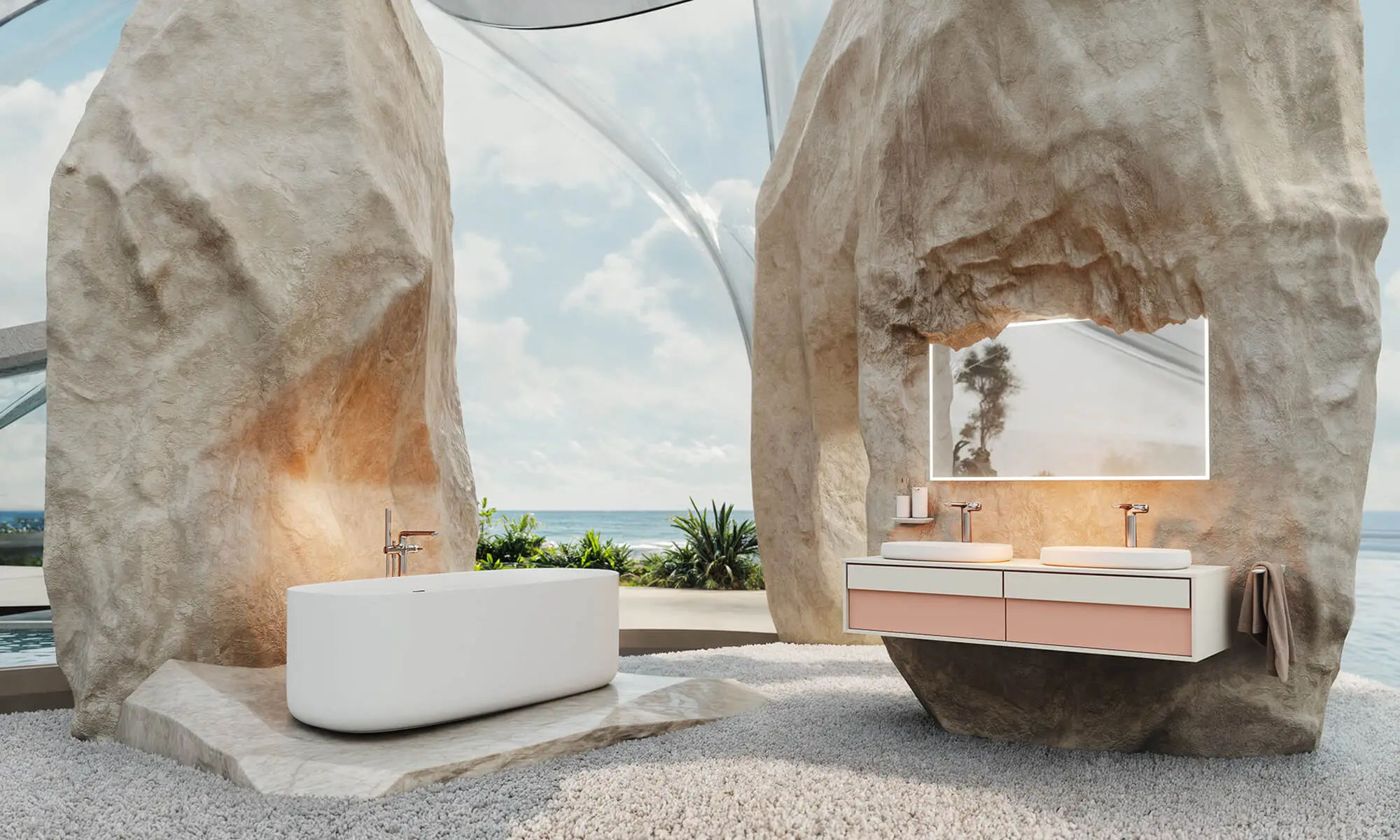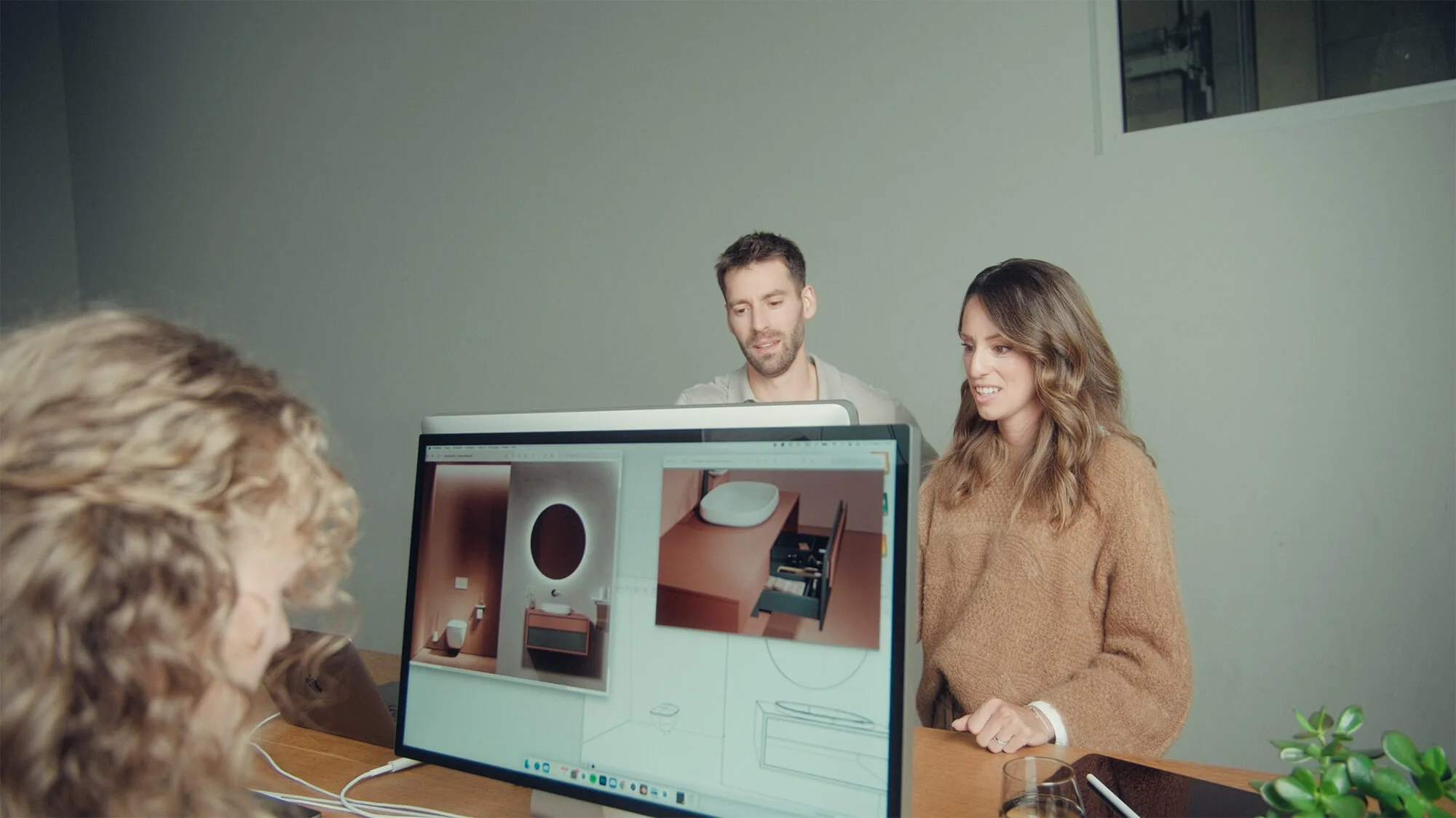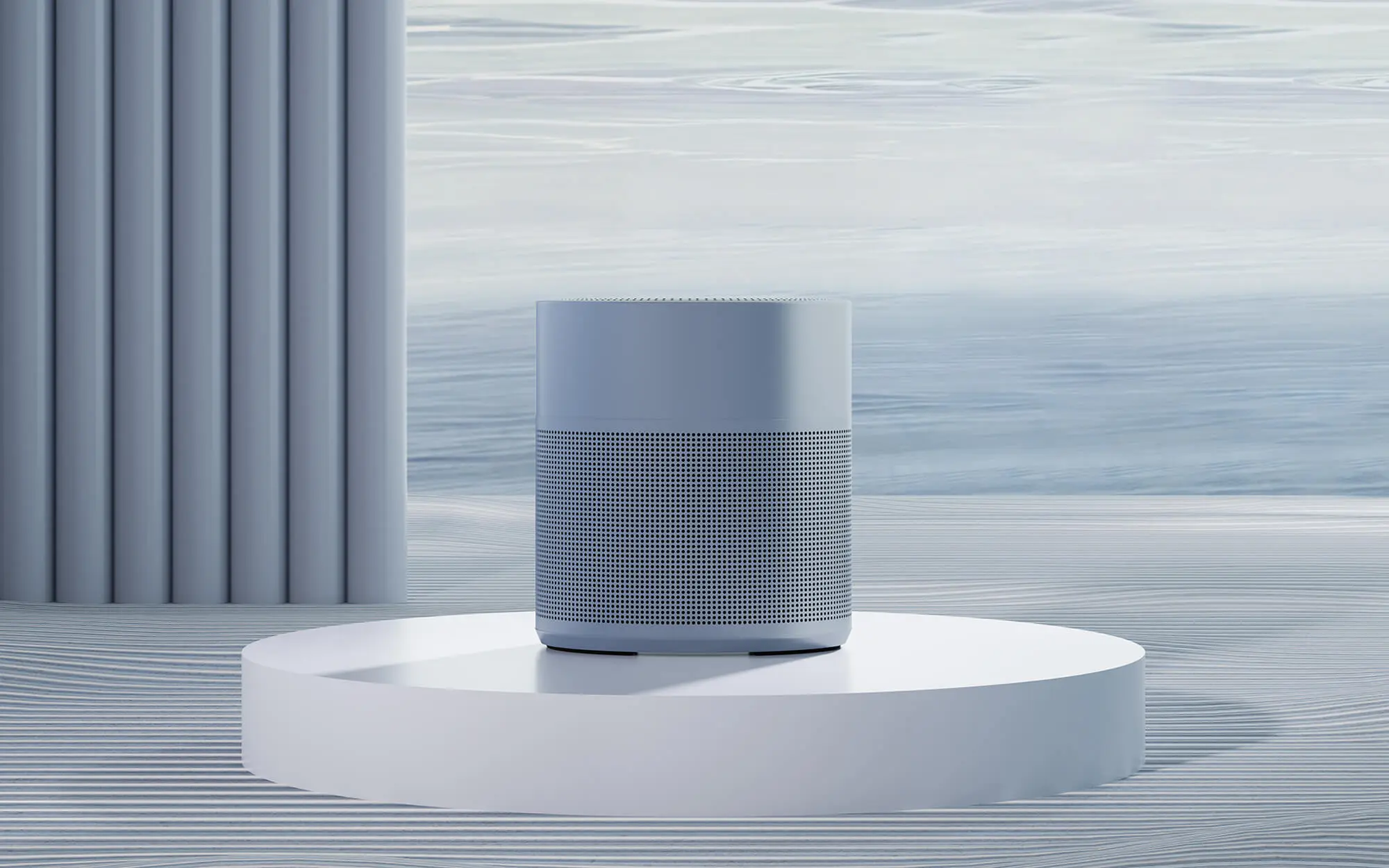What is visual storytelling?
CGI Visualization to Perfection
Danthree Studio turns complex 3D tech into high-converting marketing assets. Get high-end quality for your brand.
Start ProjectWhat is visual storytelling?
What is visual storytelling?
Visual storytelling is the targeted use of images, 3D renderings, animations or VR/AR experiences to make a brand message emotionally tangible in just a few seconds. Unlike pure product photos, it combines action + context: a sofa is not shown in isolation, but in a CGI living environment that simultaneously conveys mood, lifestyle and value. Visual storytelling is a core component of the brand experience - it combines visual language, space and interaction to create a brand-typical experience.
In short: a good picture conveys in a fraction of a second what many words need seconds to do - and anchors the message permanently in the mind.

Why is visual storytelling particularly worthwhile for home & living brands?


From Technical Term to Visual Experience
We don't just use these technologies; we master them. See how we create photorealistic worlds for leading brands.
View WorkThe 6 key elements of a strong picture story
1. clear leitmotif
A clear core message: "This sofa will make your loft cozier."
2. consistent design
Color, typography and composition direct the eye - no visual noise.
3. visual hierarchy
Most important information (product, price, CTA) dominates; secondary details are reduced.
4. emotion & excitement
Conflict → Solution: Chaos living room → CGI make-over in three frames.
5. a clear protagonist
Product or user is clearly recognizable; no "hidden object".
6. interaction
Scroll animation, hotspot or AR button gives viewers control. This is what scrollytelling looks like in practice: Scrollytelling example - 3D fireplace rendering in the brand space.
Typical story formats in the CGI cosmos

Workflow - From the story to the finished visual world
1. define fire core
- Tone of voice, target group, CI colors → Moodboard.
2. develop narrative structure
- Hero, problem, solution - like in a movie storyboard.
Internal link: 3D Animation Video
3. asset production (CGI)
- 3D modeling → UV mapping → PBR materials
- Lighting & composition for emotion (Golden Hour, Low-Key ...) and rendering in a render engine.
4. multi-channel output
- Hero render (web header)
- short loop animation (Social)
- AR-Quick-Look (glTF/USDZ)
5. performance tracking & iteration
- Heatmaps, scroll depth, A/B visuals → continuous optimization.

Quick tips

Building blocks of a strong visual story
1st hook frame
A key visual (hero shot, thumbnail) draws the viewer into the story within 3 seconds.
2. arc & emotion
Structure according to "Setup - Conflict - Solution". For products: "Pain - Product Demo - Relief".
3. CGI realism + layering
Photorealistic PBR materials, then typo & icons as overlays
4. call-to-value
Interactive hotspots (360° view, AR button) lead to the configurator.
Practical comparison: Which visual suits which goal?
Quick-Wins
3-second hook: Start each imagery or video with a short micro-animation (e.g. smooth tracking shot on the hero product). According to Wistia video marketing statistics, the view-through rate increases significantly if the first three seconds are immediately visually gripping.
Subtlelens flare instead of hard bloom: Extreme bloom is tiring, subtle highlights look more sophisticated. In the Adobe MAX Sessions, lighting artists show how soft glows can improve the look.
CTA hotspot in a one-third grid: Place clickable call-to-action icons along the "Rule of Thirds" - tests from the NN/g Visual Design Course series prove conversion lifts of up to 15 %.
Texture triosfor cognitive load reduction: Combine a maximum of three basic materials per scene (e.g. wood | metal | fabric). Smashing Magazine - Principles of Visual Communication explains the principle of material reduction in detail.
FAQs - Visual Storytelling
1. how does visual storytelling differ from classic content marketing?
Visual storytelling focuses on images, clips and interactive 3D scenes, while traditional content marketing often relies on text-only messages, white papers or blog articles. The visual approach has been proven to activate more areas of the brain, increase retention time and boost the recall rate by up to 55%. Practical examples can be found in the NDR overview of storytelling formats.
2. which KPIs are suitable for measuring the success of a visual story?
In addition to standard metrics such as impressions and click-through rate, you should track view-through rate, average watch time (for videos), scroll depth (for scrollytelling) and micro-conversions such as "hotspot clicks" in the 3D viewer. Internal evaluations show that projects on our "3D visualization" page achieve around 30 % longer session times with the same reach.
3. which file formats are ideal when fast loading times are crucial?
For still images, we recommend WebP or AVIF because they are approx. 30% smaller than JPEG. We deliver interactive 3D objects as glTF/GLB; the open format is optimized for PBR materials and is supported by all common browsers.
4 When is a pre-rendered video worthwhile compared to an interactive 3D viewer?
Pre-rendered clips impress with their cinematic look and work on any device - ideal for social ads or trade fair loops. A 3D viewer comes into its own when users have to click through colors, fabrics or features themselves. From around 20 variants per product, the interactive approach pays for itself because no additional render output is required.
5 How do I find the common thread if the product is very technical?
Start with a simple hero's journey: Problem → Solution → Result. Visualize the problem with a clear metaphor, e.g. an overloaded workbench, and then show step by step how your product reduces complexity. Inspiring examples can be found in the article 10 Powerful Visual Storytelling Examples.
6. which free tools help you create infographics quickly?
Figma, Canva or the gltf Blender IO add-ons are sufficient for initial sketches if you want to prepare 3D data directly in Blender. If you are already working with CAD models, you can activate glTF export from Blender 2.80 with a single click.
7. what are typical mistakes brands make in visual storytelling?
Too much text on slides, a lack of hierarchy, mixed style elements - this dilutes the core message. Another classic: story and call-to-action are not linked. Shopify shows in the article Brand Storytelling Tipshow to turn any graphic into a lead trigger, e.g. using an animated "add-to-cart".
8. how can visual storytelling be implemented without barriers?
High-contrast color palettes, transcripts for videos, alt texts for images and keyboard navigation in the 3D viewer are mandatory. In our virtual reality 360 tour project, we also use audio descriptions for central hotspots. The Shopify guide provides guidelines for inclusive design Google Ads vs. Facebook Ads (section "Accessibility best practices").
